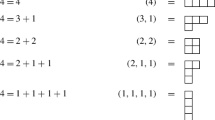Abstract
A new mathematical expectation formula with some hypotheses, notions and propositions was given to get rid of the challenge of St. Petersburg paradox and Pascal’s wager. Relevant results show that it is very effective to apply the model to solve the expected revenue problems containing random events with low probability but high revenue. This work also provides the probability theory with a more widely applied perspective in group decision-making.
Similar content being viewed by others
References
Durand D. Growth stocks and the Petersburg Paradox [J]. The Journal of Finance, 2001, 65(12): 348–363.
Székely G J, Richards D St P. Remain steadfast with the St. Petersburg paradox to quantify irrational exuberance [J]. The American Statistician, 2005, 59(3): 235–239.
Székely G J, Richards D St P. The St. Petersburg paradox and the crash of high-tech stocks in 2000 [J]. The American Statistician, 2004, 58(3): 225–231.
Blavatskyy P R. Back to the St. Petersburg paradox? [J]. Management Science, 2005, 51(4): 677–684.
Author information
Authors and Affiliations
Corresponding author
Additional information
Foundation item: the Scientific Research Foundation of Hunan Education Department (No. 05C185)
Rights and permissions
About this article
Cite this article
Liu, Dj., Huang, Tm. & Chen, Yb. An approach to resolving two paradoxes in probability theory. J. Shanghai Jiaotong Univ. (Sci.) 13, 362–365 (2008). https://doi.org/10.1007/s12204-008-0362-7
Received:
Published:
Issue Date:
DOI: https://doi.org/10.1007/s12204-008-0362-7
Key words
- conservative probability function
- conservation degree
- conservative mathematical expectation
- St. Petersburg paradox and Pascal’s wager
- convergence
- group decision-making




